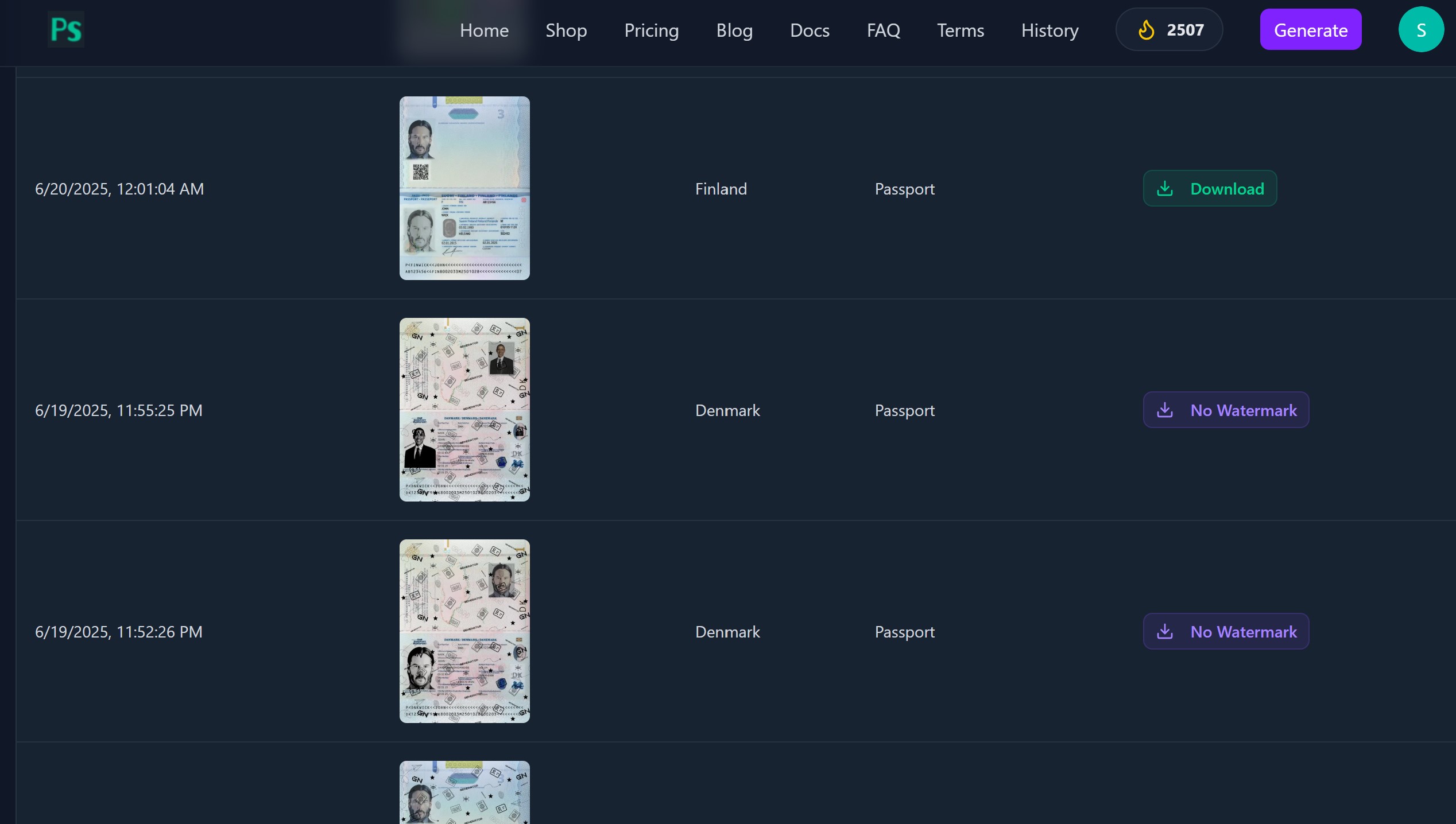What Is Only fake? AI ID Generator Explained
Explore the Onlyfake website, how its AI engine creates ID mockups, and its role in design, education, and document simulation.
Only Fake Team
Document generation experts passionate about the intersection of AI and automation. We help businesses streamline their document workflows with cutting-edge technology.

What Is Onlyfake and How Does It Work?
Onlyfake is a unique tool built using generative AI that allows users to create hyper-realistic identity document mockups. Often searched as onlyfake id, onlyfake website, or onlyfake com, this platform is frequently discussed in online forums, software dev groups, and cybersecurity communities. But what is it really for, and how can it be used responsibly?
In this article, we break down how Onlyfake works, who it's meant for, and why ethical use matters—especially when dealing with anything that resembles a fake identity. Everything here is presented for educational purposes only.
What Does Onlyfake Generate?
The platform enables users to quickly generate mock ID images that look visually similar to real documents—but these are generated fake IDs, not actual government-issued credentials. These digital creations are designed to help with testing, mockups, or training in secure design systems.
Examples of supported document types include:
- Driver's licenses (U.S., Canada, Europe)
- National ID cards
- Passports and other document styles
Platform Features
- Instant document rendering using AI
- Editable fields for name, birth date, ID number, etc.
- Exportable image files (JPEG, PNG)
- Interface designed for fast generation and testing
Who Uses Onlyfake and Why?
The term onlyfake ids refers to the generated images used in simulations. Designers, developers, and educators use them for:
- Prototyping ID submission UIs in apps or SaaS tools
- Training AI models to detect forgeries
- Demonstrating document verification systems
- Practicing fraud analysis techniques
In these cases, platforms like only fakes and onlyfakes allow teams to create usable examples without violating privacy or sharing real personal data.
Ethical Guidelines and Legal Boundaries
Using fake only documents to deceive others is illegal. Attempting to use a generated fake ID on a government, banking, or verification platform is considered fraud. It's vital to understand that tools like Onlyfake must only be used in secure, lawful settings.
The creators of Onlyfake explicitly state that it's for demonstration and design purposes only. Responsible usage includes:
- Watermarking outputs as 'SAMPLE' or 'FOR DEMO USE'
- Never uploading to real KYC or authentication portals
- Using in design portfolios or for software QA testing
Educational Value of Onlyfake
For students studying fraud prevention or identity security, Onlyfake is a valuable sandbox tool. It gives learners access to various ID structures without compromising real data. In fraud detection training, having access to mock fake identity samples is essential for building accurate AI models and manual review workflows.
Accessing the Onlyfake Website
You can find the onlyfake website by visiting onlyfake.cc. The homepage is clean, intuitive, and allows document generation with a few simple steps.
To start:
- Select a document type (driver's license, ID card, etc.)
- Enter mock details (name, DOB, etc.)
- Upload a sample image or let AI generate one
- Download the image and mark it as a sample

Conclusion
Onlyfake is a tool that sits at the intersection of AI and digital design. It allows users to generate ultra-realistic—but completely synthetic—ID documents to aid in testing, training, and layout design.
When used correctly, it empowers designers, educators, and developers to explore complex systems involving digital identity—without risking privacy, security, or ethics. However, it must be used responsibly. Never present onlyfake id images as real or use them outside of sandbox environments.
Whether you're testing an onboarding flow or teaching fraud prevention, tools like Onlyfake offer a practical way to simulate digital identity processes—legally and safely.


